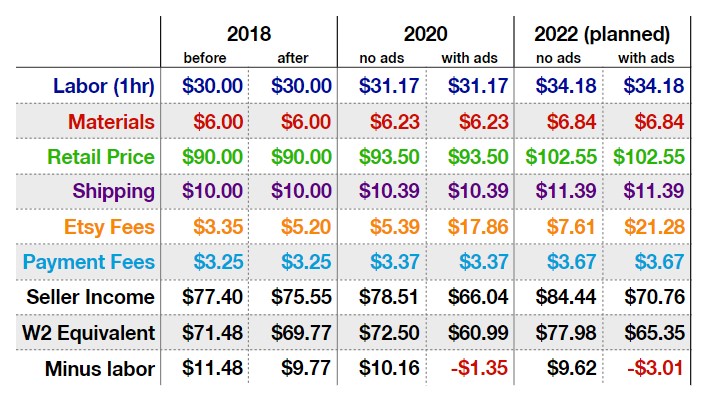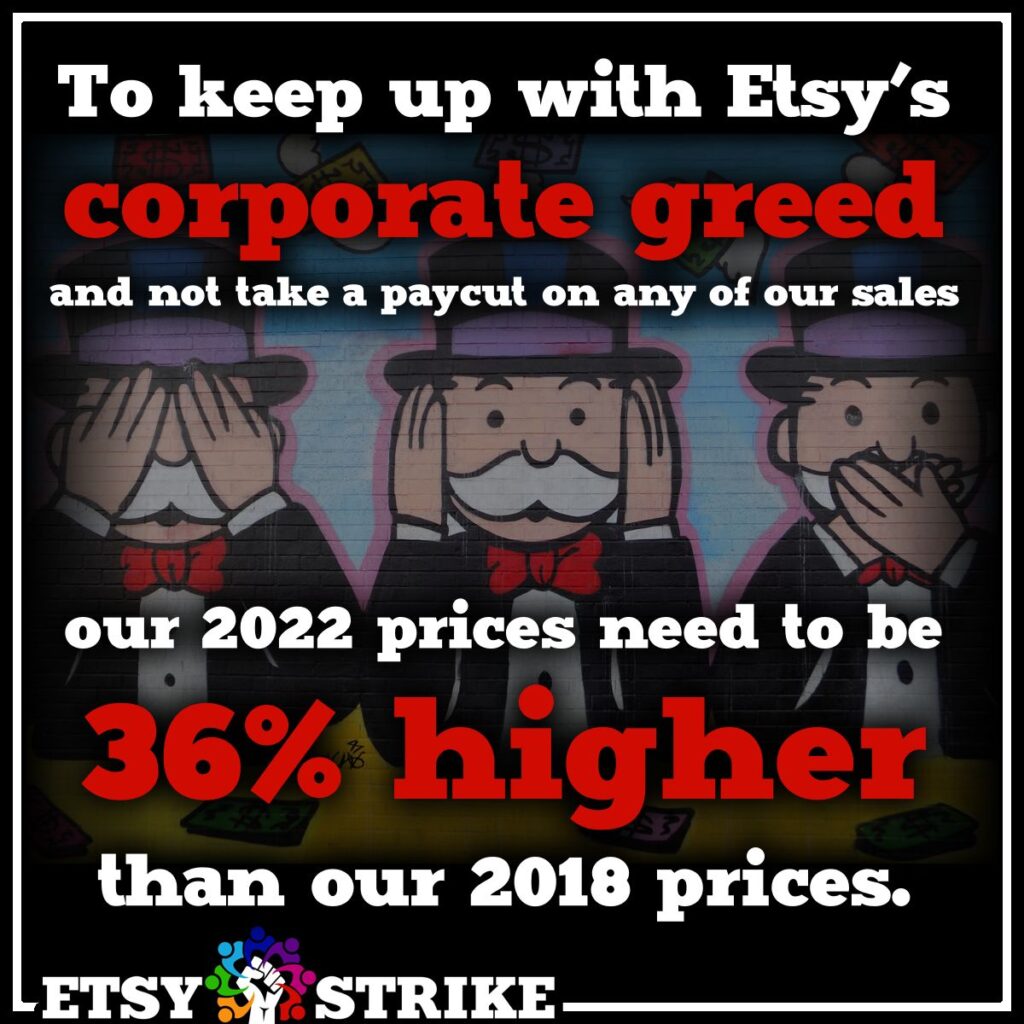My last post explained how inflation is already built into Etsy’s fees. Any serious shop will raise their prices over time, and when they do, the amount Etsy takes in fees will increase.
But what happens when Etsy gets greedy, as they have over the last few years?
I’m starting again with the same simple example from my last post. Again, you’re starting an Etsy shop, at $30 per hour, with an item that takes 1hr to make, uses $6 of materials, and costs $10 to ship. And you’re using a markup of 2.5. Again, you’ll have a product that costs the customer $100 with shipping. Except this time, it’s the beginning of 2018.
Again, we’re increasing labor, materials, and the cost of shipping with inflation, so that our price increases with inflation.
July 2018 was the date of the first fee increase. Congratulations – now Etsy gets almost $2 more out of you for every hour you work on making products. If you raise your prices to compensate, they’ll get a little more.

The table above has a couple extra rows. W2 Equivalent subtracts off the additional we pay in taxes for the privilege of being self employed. Minus Labor shows us how much is left to put back into the shop after subtracting off what we want to earn for the time it takes to make and sell the item. Customer service, photography, and other shop-related duties tend to be very time-consuming for unique handmade items.
In May 2020, Etsy started charging sellers for Offsite Ads. This is a program that you can’t opt out of – and you have no idea from month to month how many of your sales will result from this program.
As you can see, if you just raise your prices in keeping with inflation, you’re losing hourly income on every offsite ad sale, and you have little to no money to invest back in your shop.
The 2022 columns show the same calculations, but with Etsy’s planned fee increase figured in.
And I was curious to find one more number. How much would we need to charge for our items in 2022 to cover all possible fees in comparison to how much we charged in 2018?
To find this number, first we need to convert $77.40 from 2018 dollars into 2022 dollars. You’ll need “Seller income” to equal $88.19 if you don’t want to be out any money.
If you increase your markup to a little over 3x, you’ll get the correct number.

In 2018, your customer would have paid $100 with shipping for your item. In 2022, if you don’t want to take a paycut, you’ll need to charge $136.14 with shipping for that same item.

In that same time period, according to the latest data available from BLS, inflation was 13.95%.
This is completely unsustainable.

Comments are closed, but trackbacks and pingbacks are open.